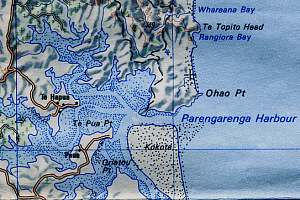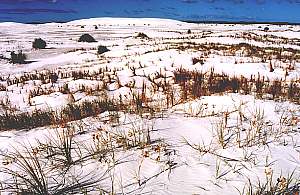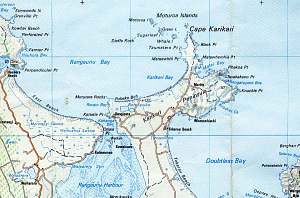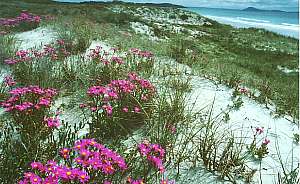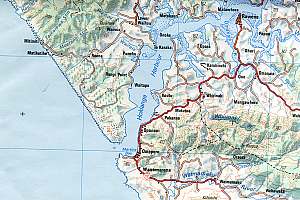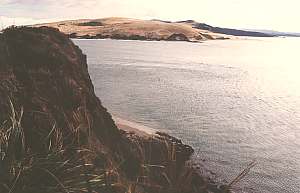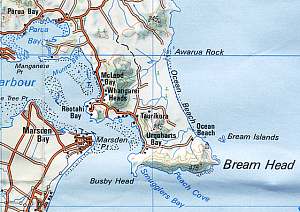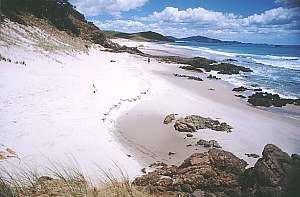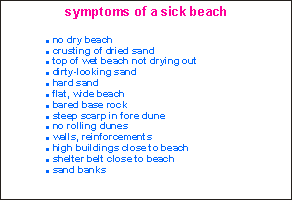 As
we have set out extensively before, the health of a dune/beach system has
little to do with the amount of sand either in the sea or on the land.
So one does not need to spend decades of laborious monitoring of the sand
budget in order to qualify the health of a given beach. (In fact sand mass
monitoring does not say anything about beach health at all). But some knowledge
of a beach's history could serve to advantage, much like a physician takes
clues from a patient's history.
As
we have set out extensively before, the health of a dune/beach system has
little to do with the amount of sand either in the sea or on the land.
So one does not need to spend decades of laborious monitoring of the sand
budget in order to qualify the health of a given beach. (In fact sand mass
monitoring does not say anything about beach health at all). But some knowledge
of a beach's history could serve to advantage, much like a physician takes
clues from a patient's history.
Just like patients, no beach is alike. They are physically different,
and are affected in different ways by the same causes. So a bit of detective
work is needed before embarking on a course of action or before drawing
a final conclusion. But in the main, almost anyone can now assess the health
of one's own stretch of beach.
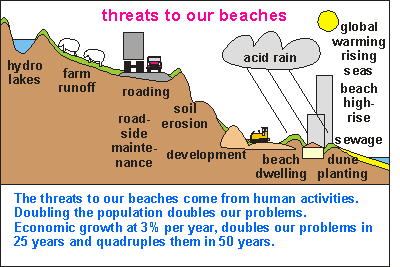 Not
surprisingly, the main threats to our beaches arise from human activity.
The drawing shows the most important ones, which we will summarise here
from right to left:
Not
surprisingly, the main threats to our beaches arise from human activity.
The drawing shows the most important ones, which we will summarise here
from right to left: When
asked, people do like their beaches. They are just not aware that their
daily actions destroy the very things they like. Many of our actions do
not only destroy beaches but also to a larger extent, our terrestrial and
marine environments. Obviously, our societies will need to make major environmentally
friendly adjustments. All over the world, environmental groups are championing
this cause. It will take time and public education.
When
asked, people do like their beaches. They are just not aware that their
daily actions destroy the very things they like. Many of our actions do
not only destroy beaches but also to a larger extent, our terrestrial and
marine environments. Obviously, our societies will need to make major environmentally
friendly adjustments. All over the world, environmental groups are championing
this cause. It will take time and public education.
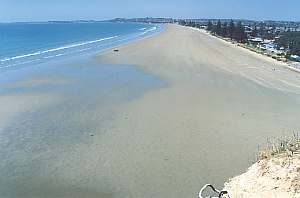
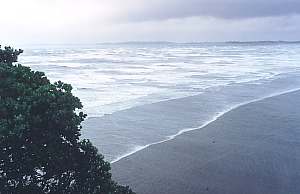
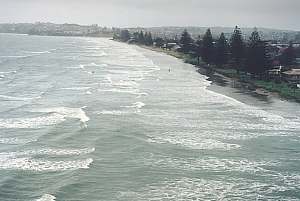
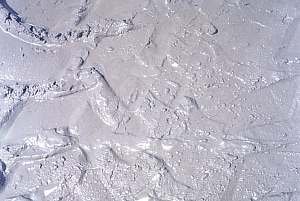
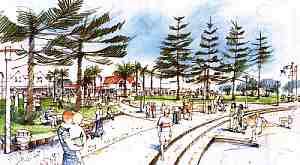
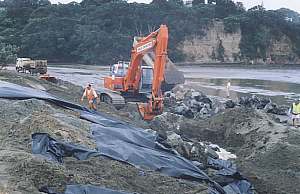
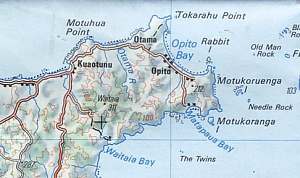
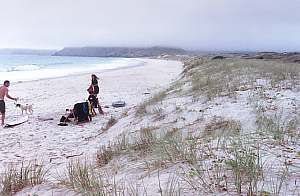
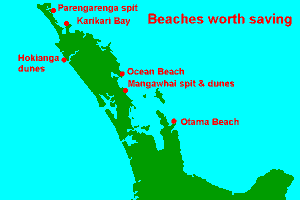 In
the northern part of the North Island, New Zealand, I have earmarked a
number of beaches that are worth saving first. The accompanying map shows
where they are. Each beach is worth saving for a different reason. It is
of course impossible to be complete but everyone knows a beach in his/her
locality that is worth saving first. From the Otama Beach example and the
examples below, a number of reasons and conditions become evident. By focussing
effort on those beaches that are still in a salvageable or even healthy
state, quick progress can be made, while the result is also likely to remain
successful.
In
the northern part of the North Island, New Zealand, I have earmarked a
number of beaches that are worth saving first. The accompanying map shows
where they are. Each beach is worth saving for a different reason. It is
of course impossible to be complete but everyone knows a beach in his/her
locality that is worth saving first. From the Otama Beach example and the
examples below, a number of reasons and conditions become evident. By focussing
effort on those beaches that are still in a salvageable or even healthy
state, quick progress can be made, while the result is also likely to remain
successful.